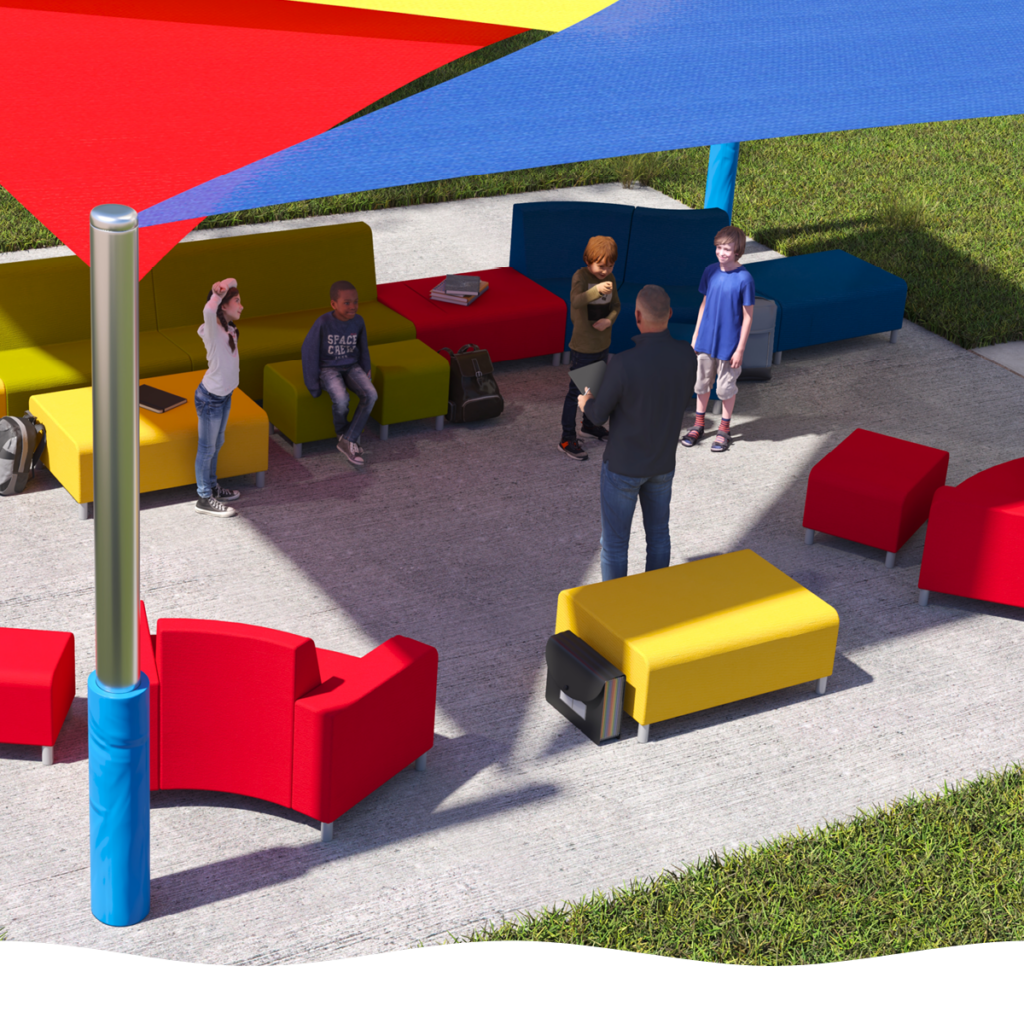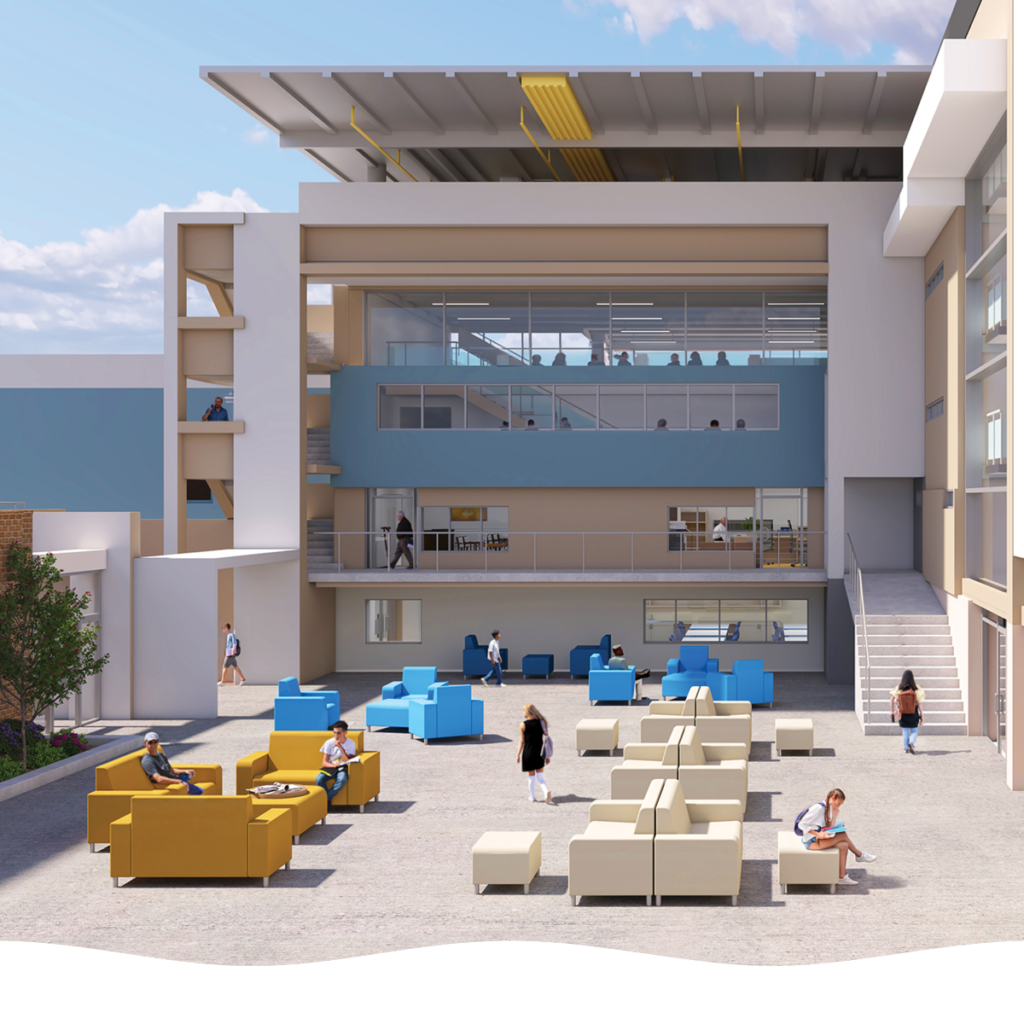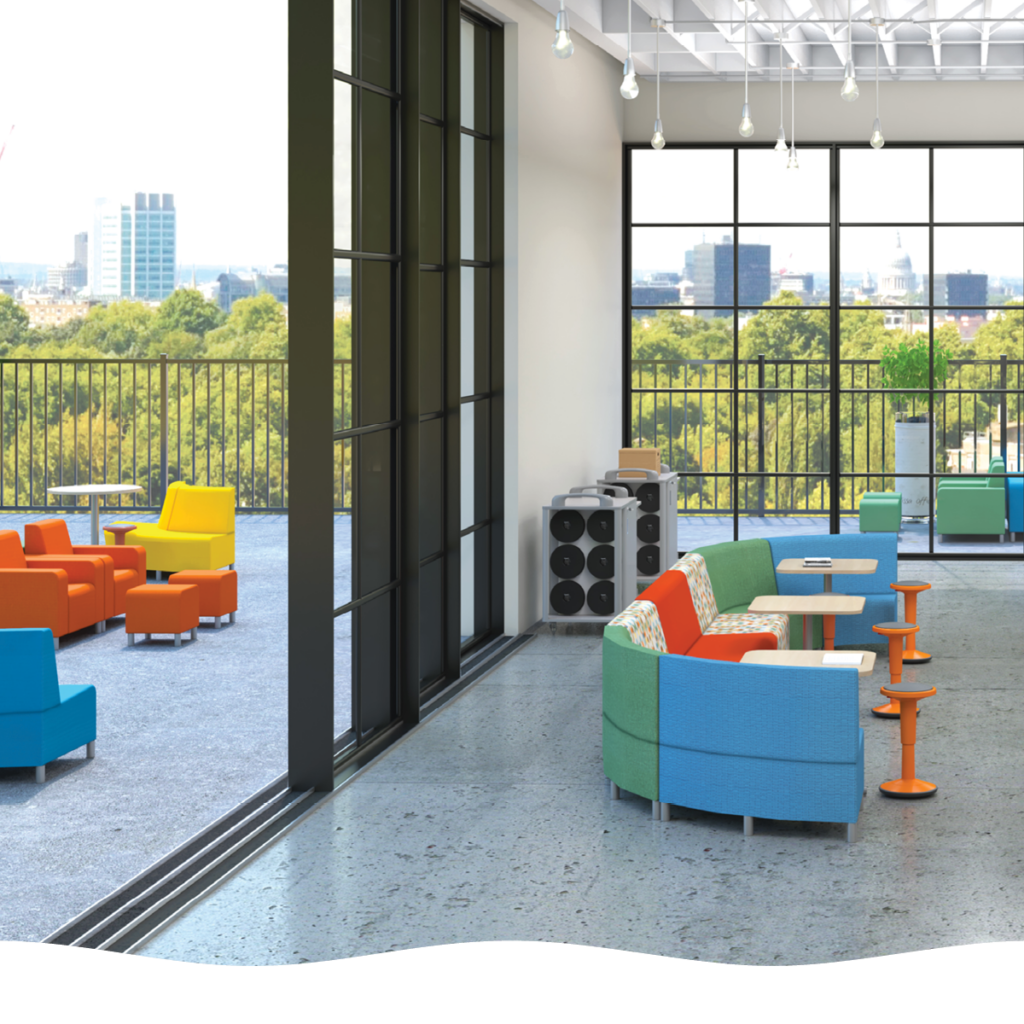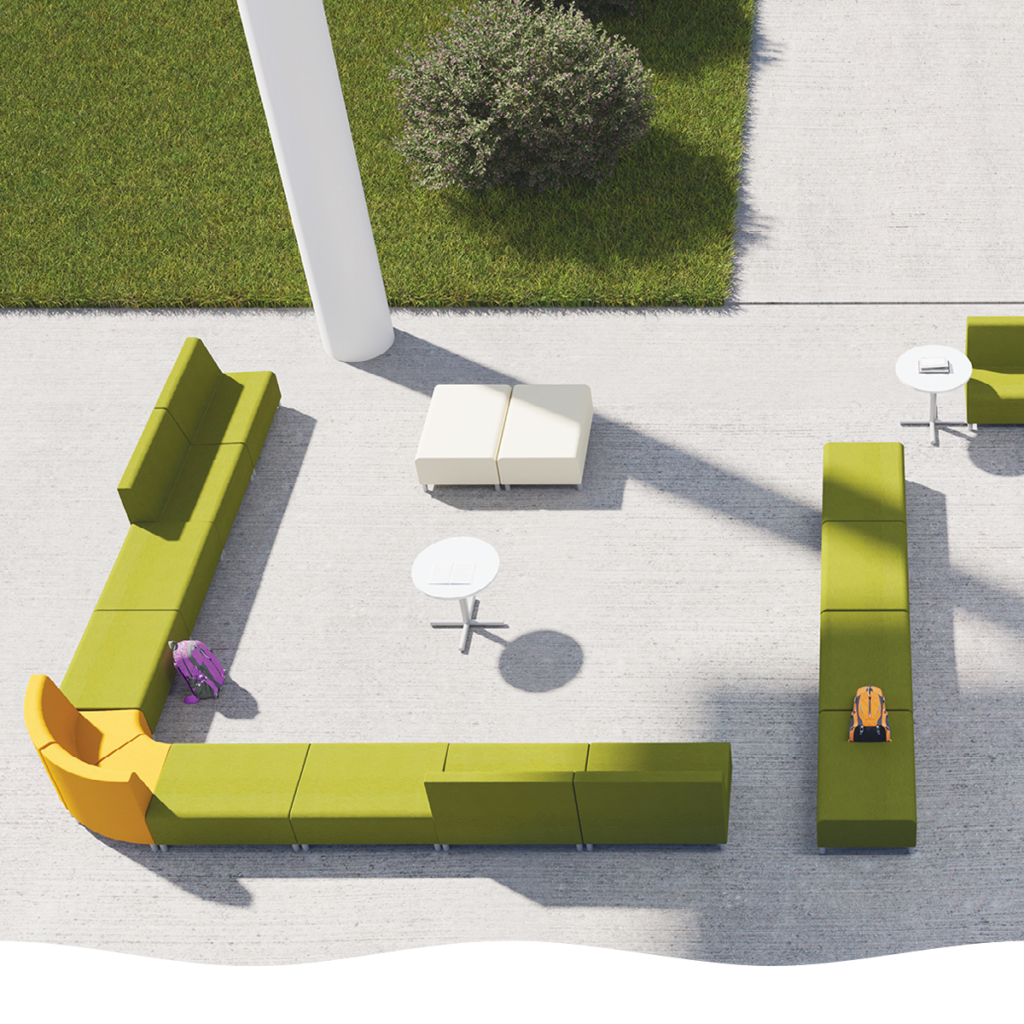In 2025, the eldest members of Generation Alpha are turning 15 and they are making their presence known in a powerful way. Members of this young generation are digital natives, they are visual learners, and they have a robust entrepreneurial spirit. They have had the world at their fingertips since birth and they use it to explore and find ways to improve the world. But there are downsides to their digital dependency.
Much like their generational neighbor, members of Generation Alpha are showing signs of shortened attention spans, digital and social media addiction, vulnerability to cyberbullying and online predators, and social-emotional challenges. But even more severe than Generation Z, they are experiencing sensory overload, reduced physical activity, and a jaded, blasé, or burned-out view of the world.

For a generation constantly plugged in, it may be surprising to hear that in the classroom they crave rich sensory experiences beyond their screens, they seek practical applications of course material, and they benefit from diverse and interactive learning experiences. Drs. Anu Kohli and Sonam Arora explain, “the current conventional educational atmosphere is not sufficient to fulfill the needs of this tech-savvy generation. There needs to be a revolutionary shift to a more thought-provoking ecosystem.”
The question isn’t What do we do? The question is Where do we go? A world-wide systemic review lead by Jeff Mann of Western Sydney University explains, “children are moving indoors at a vital time in their growth and development when the evidence-base suggests they would benefit from time outdoors.”
For decades — even centuries — it’s been widely known that spending time outside can slow heart rates, reduce stress, enhance sensory awareness, and improve overall well-being. It was even popular for doctors to prescribe time in nature to soothe ailments such as tuberculosis, rheumatism, neurological disorders and mental disorders. In the modern era, time in nature releases “happy hormones” such as dopamine, oxytocin, and serotonin, and can reduce some of the anxiety caused by social media.
We can’t change the fact that students will remain attached to their devices no matter where they are. However, by taking learning outdoors — with devices in tow — we can harness the benefits of nature to create a healthy balance. This approach allows students to experience the benefits while still engaging with technology.
Outdoor learning is crucial for holistic development, addressing specific physiological and psychological needs while tapping into Generation Alpha’s natural curiosity and entrepreneurial spirit. Nature provides the stimulation they crave and the real-life learning opportunities they seek. Whereas traditional, sedentary learning is restrictive and at times irrelevant, outdoor environments cater to their need for movement and aligns with their desire for autonomy and self-directed learning.

“Outdoor environments … have the potential to empower children to let their imaginations and bodies roam free to transform their surroundings, to invent and create,” states a Finish study lead by Leena Kiviranta. Time spent outside stimulates curiosity and activates multi-sensory learning. The calming, grounding effect of being outside creates the ideal environment for connection, exploration, and self-discovery. For this inherently curious group, a deeper connection with the natural world fosters a sense of wonder and inspires introspection, resulting in a greater appreciation for one’s place in the world.
Schools are harnessing the benefits of outdoor learning to combat the digital doldrums experienced by this young generation. Connecting with nature when curiosity and creativity are at their peak cultivates a life-long love of learning and an insatiable sense of wonder.
The Finish study confirms that when learning is taken outside, Generation Alpha flourishes. “The natural environment stimulate[s] children to work more as a team, spark[s] interaction during practical, hands-on activities that improve children’s sense of responsibility, competence and social-emotional skills.”

Research from Barcelona, Spain has revealed that schools with outdoor learning areas report increased cognitive development in children. Studies show as much as 54% more engagement from students inside the classroom after an outdoor lesson.
Adolescence is a critical period characterized by exploration, identity formation, and the development of autonomy. Nature is a calming, stimulating environment for sensory processing. Time spent in nature reduces the digital overload dubbed “nature deficit disorder” students are experiencing and helps them regulate their emotions and improves overall health.
But productive outdoor learning spaces need more than a bench or patch of grass. Outdoor spaces specifically designed for Generation Alpha should be filled with furniture solutions that give them options to support their bodies and create their own inspirational spaces. Like their expectations for indoor spaces, these young learners need a space that fosters ownership and autonomy to arouse their ambitious spirits.
Outdoor soft seating combines indoor comfort with outdoor freedom. Durable, weather-resistant, ergonomic pieces allow students to spend prolonged time in nature. Meeting the physical needs of students does not end when the doors open. A healthy body is key to a healthy mind. Ergonomic seating facilitates optimal physical growth and health, enabling movement, proper posture, and adequate stimulus. When students are physically supported and comfortable, they have energy to engage in high performance learning opportunities for an extended period of time.

Mobile, modular pieces allow them the flexibility they need to recreate their space over and over again. For next-level adaptability, furniture that moves from indoors to outdoors offers even more freedom and can accommodate a greater range of learning styles. This flexibility allows more students to find their optimal learning environment and become agents in their educational journey.
Not all outside time needs to be structured learning. In nature, our senses ignite and our constantly active and buzzing minds calm. Daily exposure to natural light impacts our circadian rhythms, affecting our quality of sleep and, in turn, our emotional, psychological, and physical health. Simply being present in nature for as little as ten minutes a day has been shown to positively impact cognitive function, increase attention spans and short-term memory retention, and improve creative problem solving.
Welcoming outdoor lounge areas with multisensory stimulation like windchimes invite students to rest, recharge, and regulate. Comfortable beanies can be shuffled and rearranged into groups, separated for quiet, alone time, or relocated entirely to create a classroom anywhere on campus grounds.
From digital dependency to a sense of disillusionment, the challenges faced by Generation Alpha demand a radical shift in our approach to education. A robust outdoor learning initiative addresses these challenges and unlocks the immense potential of this generation. As this generation continues to mature, Drs. Anu Kohli and Sonam Arora predict “the focus [of education] will shift from a transfer of knowledge to the co-creation of knowledge.” Outdoor spaces have the potential to facilitate this shift, allowing students to become active participants and to collaborate with peers to build a new understanding of the world.
Sources:
Kiviranta, Leena, et al. “Outdoor Learning in Early Childhood Education: Exploring Benefits and Challenges.” Educational Research 66, no. 1 (December 5, 2023).
Kohli, Anu, and Sonam Arora. “An Unconventional Education Landscape for Unconventional ‘Generation Alpha.’” International Journal for Multidisciplinary Research 6, no. 5 (October 2024).
Mann, Jeff, et al. “Getting out of the Classroom and into Nature: A Systematic Review of Nature-Specific Outdoor Learning on School Children’s Learning and Development.” Frontiers in Public Health 10 (May 16, 2022). https://doi.org/10.3389/fpubh.2022.877058.
Opbroek, Jet, et al. “Urban Green Spaces and Behavioral and Cognitive Development in Children: A Health Impact Assessment of the Barcelona ‘Eixos Verds’ Plan (Green Axis Plan).” Environmental Research 244 (March 2024): 117909. https://doi.org/10.1016/j.envres.2023.117909.

